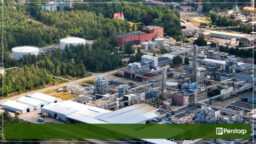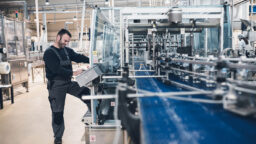We’ve recently worked with three companies that shared a common problem. While experiencing strong growth, all three were caught in what we call the customer service trap.
Like many businesses, these companies built their success on always being there for their customers – jumping through hoops to fill last-minute orders. Their customers love the attention and flexibility. However, a reactive approach to customer service doesn’t scale well.
As the companies grew, so did the pressure on their manufacturing. With spare capacity gradually disappearing, last-minute orders were getting increasingly tricky to fill, requiring the constant adjustment of schedules. While some added more inventory to compensate for the demand uncertainty, they all struggled with delivery performance.
Manufacturers in growth mode often see a squeeze on production capacity. This is only natural as companies want to ensure that future demand warrants investment in additional capacity. But the squeeze also highlights the need to reconsider how best to achieve good customer service.
This post covers a common misconception about customer service and how a change in mindset – and systems – can help prevent you from getting caught in the customer service trap.
Good customer service doesn’t mean saying yes to everything
Many companies are stuck in the mindset that the only way to provide good customer service is by saying ‘yes’ to everything. This is fine if you know that you can deliver, but often companies don’t know that with certainty, and end up scrambling to make it work.
Of course, every customer loves to feel like they’re your most important client, and they appreciate you for making their life easier. But what they like more than anything else – even more than knowing you are bending over backwards to keep them happy – is consistently receiving the right product at the right price at the exact moment they need it.
So how can you move out of fire-fighting mode and start operating more effectively and more profitably…while at the same time giving your customers the service they expect?
It all starts with an accurate forecast.
How to find your way to the win-win
At Optimity, we nearly always start with demand planning because it sets the pace for the rest of the supply chain. Implementing statistical and collaborative forecasting will improve your short- and long-term forecast accuracy. This allows you to get ahead of demand uncertainty and gain the forward visibility needed to effectively plan and operate your supply chain.
A statistical forecast provides a good baseline projection of demand for you and your customers. From here, demand collaboration tools enable the exchange of quantitative and qualitative forecast information, both within the company and with your customers. By involving your customers in your forecasting process, you can tap into their plans much sooner, benefiting both parties.
With a robust demand plan in place, the next step is to add production planning to the mix. An optimized production plan considers all costs and constraints, allowing planners to make more informed decisions and quickly respond to opportunities – regardless of the time horizon.
As one of these companies commented, “The solution allows us to see what we can deliver and when with our existing capacity – and, at what cost. We can now have a much better conversation with our customers. It completely changes the way we work.”
This highlights how important it is to understand how changes in demand impact overall customer service and profitability.
Jeff Stites, CEO of ice cream maker Bubbies, gives another great example:
“A major retailer approached us with a significant opportunity. Once we added it into the system, we could see that it wouldn’t work. We wouldn’t be able to service the request and keep the product in stock. But because we had this information well in advance, our sales team was able to work with the customer and shift the order to a different time window. In the end, we could accommodate the new customer and everything else on our books.”
The outcome of this scenario could have been very different. Without knowing the impact of the order on the existing plan, the company would likely just have accepted the new business, inevitably causing a cascade of supply chain problems and ending up with at least one unhappy customer. If the company had declined, a great opportunity would have been lost.
(You can listen to Jeff’s interview with Lora Cecere of Supply Chain Insights here. Or read the Bubbies story here.)
Shift from being reactive to proactive
When you fall into the customer service trap, you risk jeopardizing your efficiency and profitability. What’s needed is a change in mindset – and software.
An integrated supply chain planning solution allows you to anticipate demand instead of simply reacting to customer orders. When you combine accurate forecasting with production and inventory optimization, you can service most of your last-minute orders from stock – without disrupting the production schedule. As a result, you no longer have to jump through hoops to keep your customers happy.
A modern planning solution lets you understand the full impact of demand on your supply chain – from both an operational and commercial perspective. Ultimately, you end up with a much better way of providing the excellent service both you and your customers deserve.
If you want to learn more about demand planning and supply chain optimization and how it could benefit your business, we’d love to talk.
Get all the latest industry trends, updates & news from Optimity
















